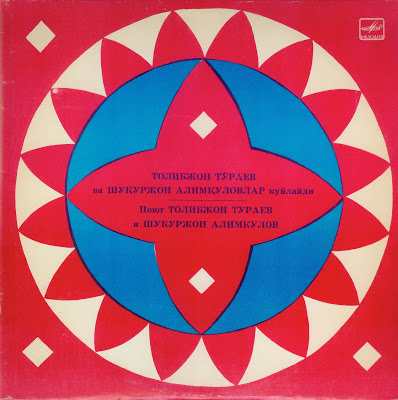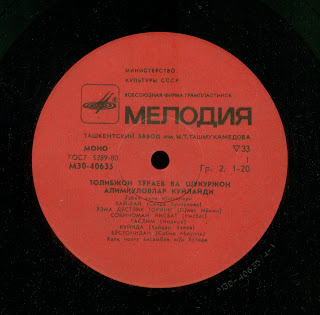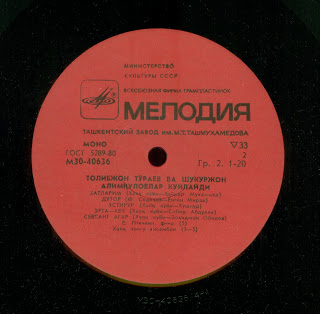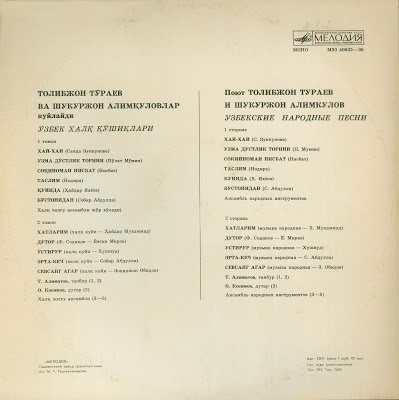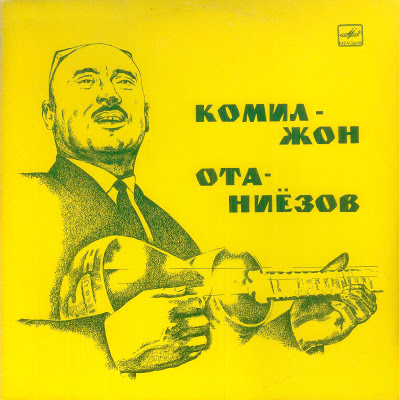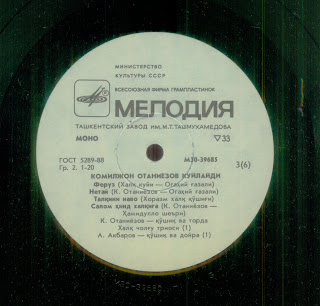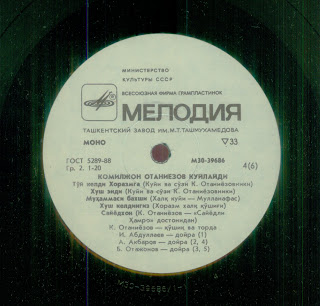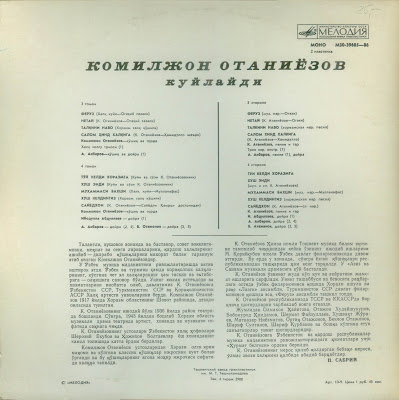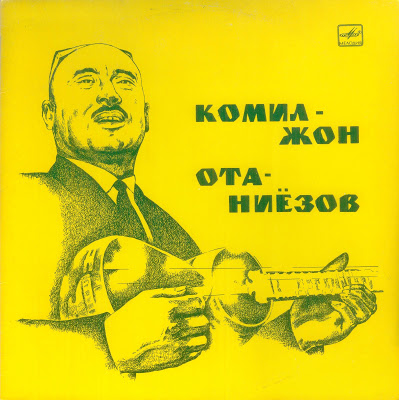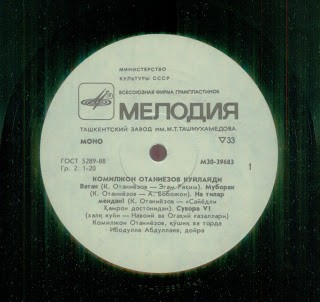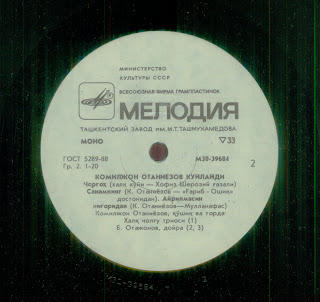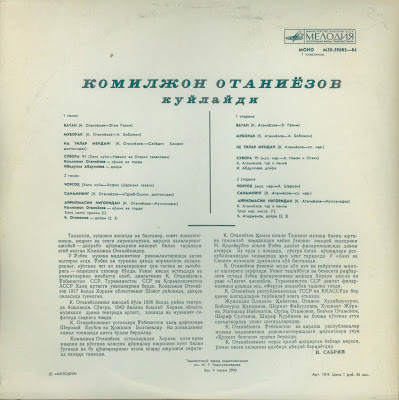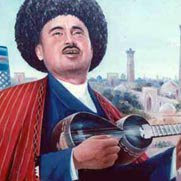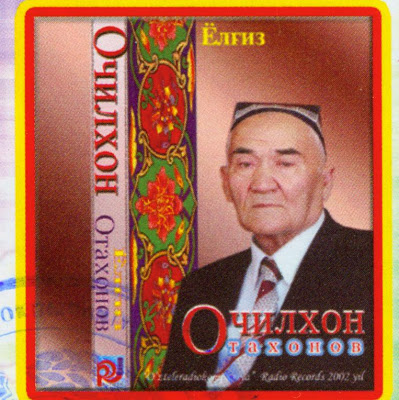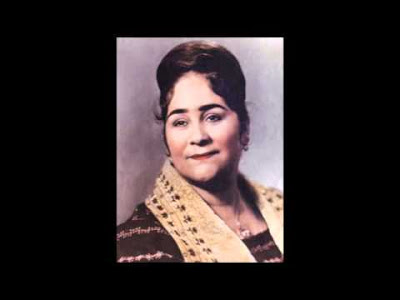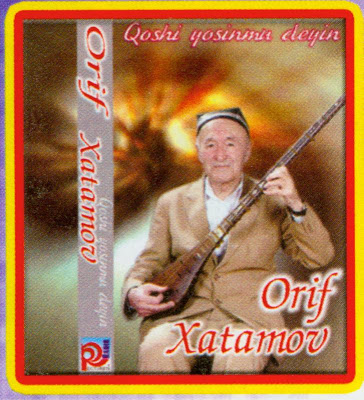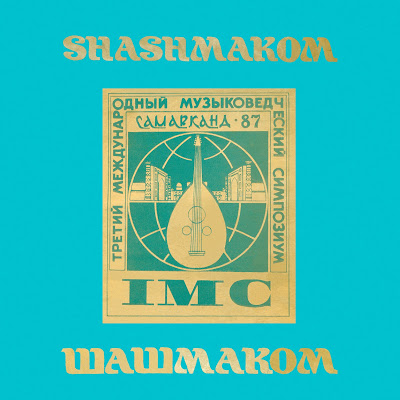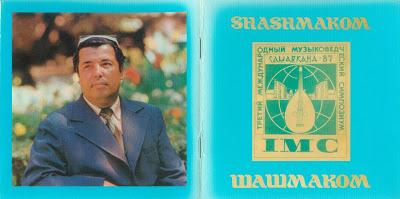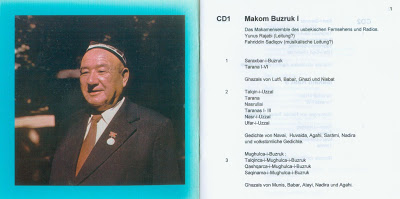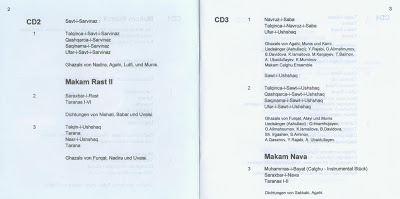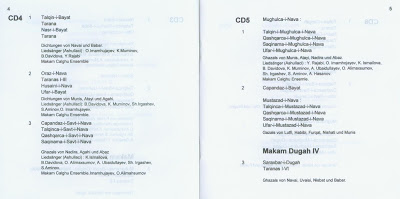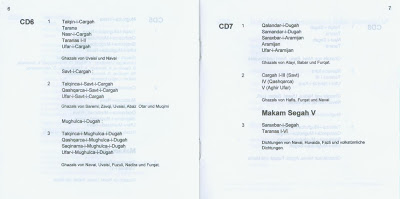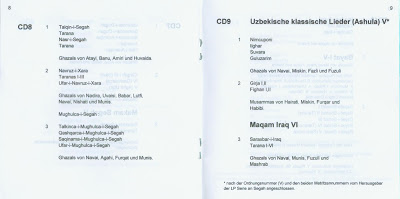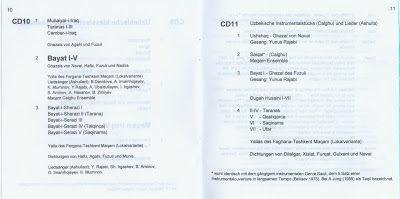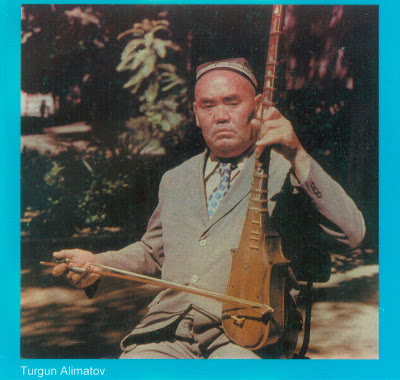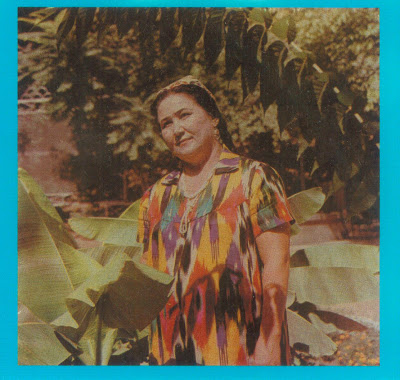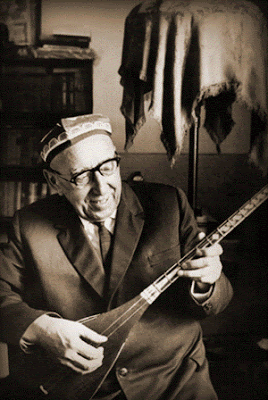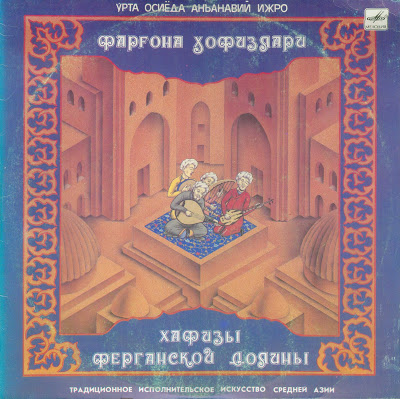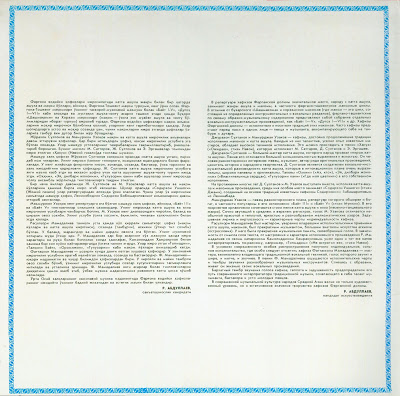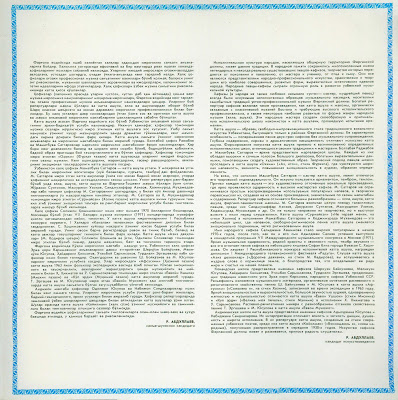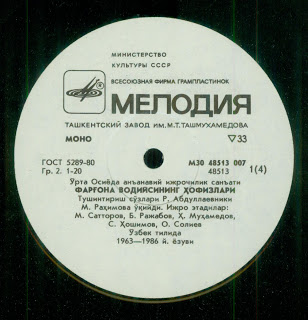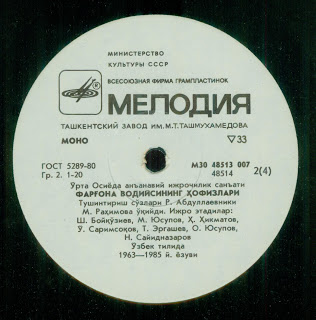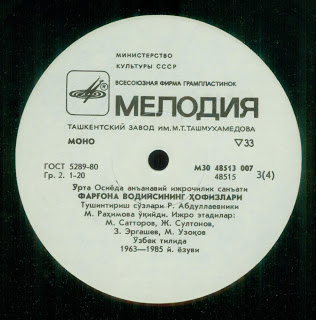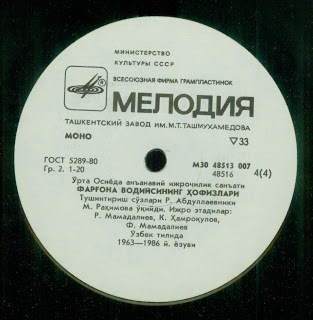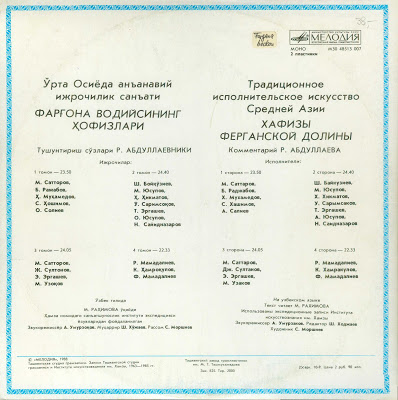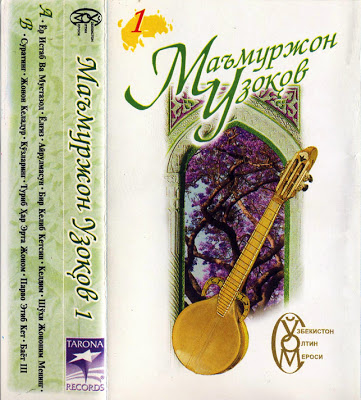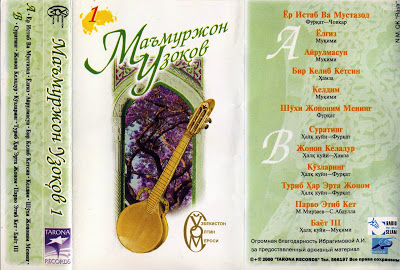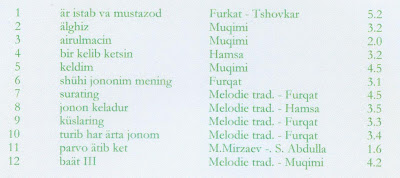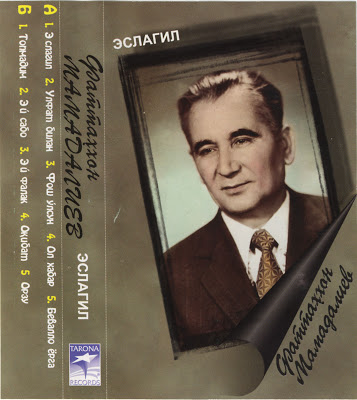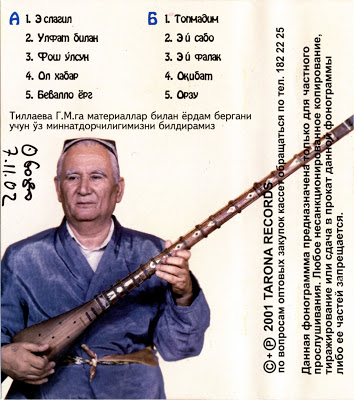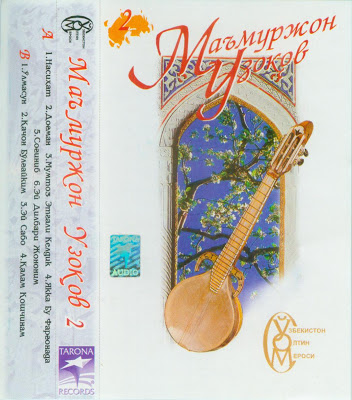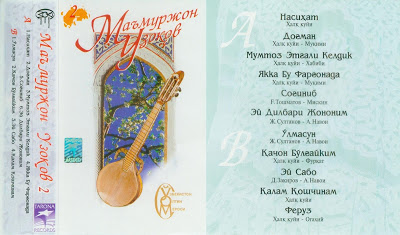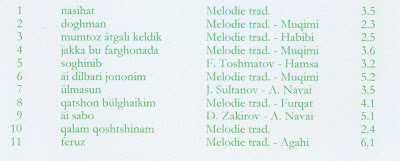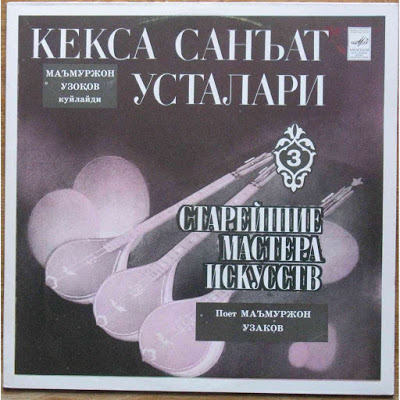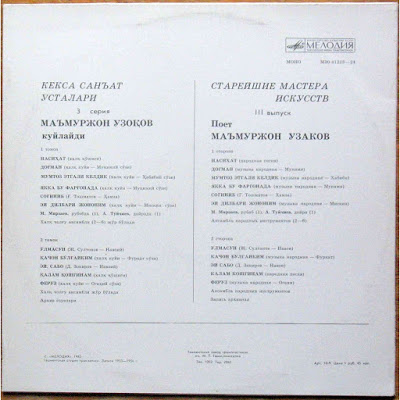Unfortunately we don't have the original LPs. We received them about ten years ago from a friend in order to sell them for him. Before we sold them we made copies of the complete set. So what we present here is the transfers of the LPs to 11 CDs, together with complete scans of track infos in original Russian and translation into German, with some additional notes.
As an excuse for not keeping the original LPs we have to say, that this is a music which - at least for me - did not open up immediately. Only after many years of occasional listening and diving into it, it unfolded slowly its beauty and fascination. Now I'm completely fascinated by this music and am listening to it very often, mostly a couple of CDs in a row, with increasing excitement.
This 1987 edition must be a re-edition of an earlier edition, as the director of the ensemble, the famous reviver of Shashmaqam Yunus Rajabi (1897-1976), passed away already in 1976. Zhuzhu has posted in her blog an LP, dated by her 1963, of the parts 2 & 3 of Makam Rast. These are the same recordings as in our post, with the same matrix numbers. See:
http://zhuzhulingo.blogspot.de/2011/06/rost-makomi-1963-12673-za-gruzka.html
Angelika Jung mentions in her book: "Quellen der traditionellen Kunstmusik der Usbeken und Tadschiken Mittelasiens" (Hamburg, 1989) on page 47 an edition of 20 LPs, published in 1966 on the occasion of the 425th anniversary of the poet 'Alishir Nava'i.
From a recently discovered reference it became clear that these recordings were completed in 1965. Read more
here. The reference is from the book: "From Shamanism to Sufism: Women, Islam and Culture in Central Asia" by Razia
Sultanova. The two female singers on these records talk there (in chapter 22) about their lives, and about the recording of this Shashmaqam.
"THE SHASH-MAQÂM OF BUKHARA
The Shash-maqâm of Bukhara, the most prestigious body of Uzbek and Tajik music, took shape in the 18
th century. Its principle comes from the ancient Arab-Persian nowba suite which is still found in various forms in many traditions stretching from North Africa (see our post:
Al-Haj 'Abd al-Karim al-Rais - Vol. 3 - Classical Arabo-Andalusian Music from Fes, Morocco) to Kashmir (see our post:
Sufiana Kalam - Classical Instrumental & Vocal Music from Kashmir). Bukhara and Samarkand were multi-cultural but mostly Tajik and Persian-speaking cities; they still are, even though they have been part of Uzbekistan since the founding of this republic in 1929 and its independence in 1991. The Shashmaqâm is traditionally sung in Persian, and it was only in the 1940's that Uzbek texts were adapted. This repertoire is also highly appreciated in other bi-cultural Uzbek-Tajik regions such as Ferghâna, a small part of which is in the north of Tajikistan and the remainder in Uzbekistan.
During the Soviet period, traditional music was often threatened by reforms and acculturation policies, or even elimination (between 1953 and 1956). It managed to survive however by adapting to the new conditions. In addition to official performances by large ensembles, the maqâm has always remained a living, creative art, performed by remarkable musicians in solo, in duos, trios, or larger groups, in private contexts and at banquets held for weddings, births, circumcisions or funerals. An essential phase of these long feasts (toy) is the nahâr âsh, dawn or midday banquet, restricted to men, to which art music (maqâm or khalqi genre) brings a note of solemnity. This music is also heard at less formal gatherings (gap), and other invited occasions (ziâfat). It is so closely linked to these contexts that listeners don't feel any particular need to go to concerts to hear the same music – without eating and drinking. At the emir's court, exhaustive performances of maqâm had a protocol. The instrumental pieces were played while the emir walked slowly with his retinue from the palace to the garden. Nowadays, the conditions for the complete performance of a maqâm are never found. Participants at toy want varied pieces and contrasting styles. The maqâm of Bukhara is no longer played in a more or less exhaustive manner as it was at the court. The pieces, removed from their context, are frequently shortened and only a small number of them are regularly played or sung. In addition, the maqâm of Bukhara has strong competition from that of Ferghâna, which is much more succinct, and the many compositions which it has inspired. For more than a century now this region has been a breeding ground for great performers and composers. The style is freer, less academic and more versatile than the style of Bukhara. Under its influence, a specifically Uzbek version of the maqâm of Bukhara, originally created in Persian (sometimes called Tajik in Central Asia) came into being.
ORGANIZATION OF THE SHASH-MAQÂM
In Central Asia, the term maqâm refers above all to long sequences of music organized in cycles or suites, while the meaning of “melodic mode”, common in the Middle East, is a more secondary meaning here. Each “suite” bears the name of its initial modal melody: Buzruk, Râst, Navâ, Dugâh, Segâh, Irâq. The six cycles or maqâm have a total of 252 pieces which are always designated by two names: that of the rhythmic cycle (which also determines a form, a “movement”) and that of the base mode. For example Sarakhbâri Dugâh means “the Sarakhbâr (and its specific rhythm) of the maqâm Dugâh”. Thus, all of the sarakhbâr, ufar, tasnif, etc. follow the same rhythmic cycles. Only the tarâna (short songs) are not limited to a specific rhythm. The fundamental structure of each maqâm is composed of instrumental forms tasnif and mukhammas, followed by vocal forms sarakhbâr, talqin, nasr and ufar. The other pieces are built around this framework. Most maqâm have one, two or even three main parts called shu’ba, literally appendices. Each shu’ba corresponds to a new suite of pieces which are played in another modal color, but to the same rhythmic structures which compose the first part of the maqâm.
The organizing principle of a maqâm is the rhythmic development or variation much more than the modal progression. From one maqâm to another, pieces with the same form/rhythm name (such as Qashqarcha, Mughulcha, Saqi-nâma, etc.) show little difference in their general structure. Also, while the tasnif (instrumental) faithfully reflects the spirit of the maqâm (but without its modulations), as the sections progress, the melodies become more similar. In the vocal shu’ba, the same melodic line more or less is adapted to various rhythmic and metric structures.
The musicians do not see the maqâm and shu’ba as abstract modal entities, but rather as autonomous pieces connected by affinities, a conception which is also found in the Uighur Muqam. There are indeed modal signatures which allow us to identify a piece without having heard it, but what the listener immediately notices is the rhythmic genre, not the modal form.
If we want to carefully observe the traditional modal progression which corresponds to the frets of the lute tanbur, singing the maqâm from beginning to end requires an exceptional vocal range. In order to overcome this difficulty, there could be two singers (a “baritone” and a “tenor”) or some parts could be transposed (for example playing a piece in C and the next one in G). As modal coherence is not the essential principle of the Shash-maqâm, and in any case the limitations of concert performance require shortened versions, this is the solution which is more commonly chosen. In the past, one category of singers specialized in the forms of the first shu’ba group with pieces such as nasr, which are involved, difficult in terms of rhythm and which require a broad range. Other singers specialized in the sawt, an easier style (talqin, mughulcha, sâqi-nâma, etc.). The former were honored with the title of “master” (ustâz), the others were called “singers” (sawt khân). We assume that this specialization gave them total rhythmic mastery and thus greater freedom in singing and improvisation. The easiest tunes could be sung by the instrumentalists themselves or by audience members while the singers caught their breath.
MELODIC AND RHYTHMIC STRUCTURES
All of the melodies start from the low register and slowly work their way upwards to a peak (awj) before returning more rapidly toward the low register. With the exception of the tarâna, all of the sung tunes of the Shash-maqâm can be divided into 5 moments: darâmad (introduction), miân khat (median section) one or two awj (apogee), du nasr (repetition of the fundamental theme an octave higher), furuvard (descent, conclusion). Any modulations (namud, “citation”) occur in this section. As for the instrumental pieces, they follow a rondo structure alternating a “refrain” (bâzgu’i) and varied sections (khâna, literally “room”), arranged according to the formula a ab abc abcd, etc.
The rhythmic formulae are called usul (literally “principles”), a term which also applies to dance and which is equivalent to a “movement” of the tempo and the specific rhythmic structure. There are about 20 usul (ranging from 2 beats to 48 beats), some of which are cited in the ancient Arab-Persian treatises and which are found, in various forms, in the Turkish and Arab traditions. In addition to these, many usul are used in classical compositions. The sung poems are borrowed from great Persian authors such as Rudaki, Hâfez, Sa’di, Jâmi, Amir Khosrow, Bidel and, in Uzbek versions, from Turkish-Persian poets like Fuzuli or Navâ’i, and Turkish authors such as Mashrab and Saqqâki or from lesserknown local poets (Hilâli, Khojandi). The tarâna poems are of folk origin and do not follow the classical meter.
PERFORMANCE AND COMPOSITION
The ideal and minimal instrumental configuration for playing maqâm includes lutes tanbur and dutâr, and the spike fiddle ghijak, often replaced by the violin for which the technique and position is the same, but which has a sweeter sonority. In medium-sized groups, a frame drum dâyra is added. The voices sought are firstly those with a range of two octaves or more. Timbre is not as important as finesse and originality of interpretation, which requires the talents of a composer, arranger and improviser. Great singers can instantly adapt a new text to a known melody, and in the culminating parts (awj) of a song, they can introduce at will variations, modulation schemes (namud) or they can take the song out of its meter (ghazalrâni). Then there is a whole range of ornaments (miang) which the instruments also try to imitate: sighs (nâlash), “softness” (shirin kâri) and târtish, nâlash, mâlash or keshash (stretched, forced notes), not to mention rhythmic effects: rolls, syncopation, etc."
Jean During, from the booklet to the CD "Uzbekistan - Maqam Dugah - Uzbek-Tajik Shash-maqam", Inédit, W 260111, 2002
This CD and other CDs of Uzbek and Tajik music can be obtained from:
info@raga-maqam-dastgah.com
In 2010 there was published in Germany a complete score of the Shashmaqam, written down by Ari Babakhanov, a descendant of one of the last court musicians of the Emir of Bukhara:
Angelika Jung (Hg.): Der Shashmaqam aus Buchara - Notenband (2010) - Überliefert von den alten Meistern handschriftlich notiert von Ari Babakhanov. Notenband mit Audio Doppel-CD mit Originalaufnahmen. Erste vollständige Niederschrift dieser alten höfischen Tradition, 486 pages, Verlag Hans Schiler.
The present score represents the most completely documented version of the Shashmaqam; included in the book are two digital audio discs with a complete cycle of a Maqam.
This product can be obtained from:
info@raga-maqam-dastgah.com
Jean During wrote an excellent introduction, with an accompanying CD, into the musical traditions of Uzbekistan-Tajikistan: Musiques d'Asie centrale - L'esprit d'une tradition, Actes-Sud (1998), (in French)
The last two CDs contain the second part of Maqam Iraq, some parts from the Maqam tradition of the Ferghana Valley and some songs and instrumental pieces which belong to the Shashmaqam tradition.
